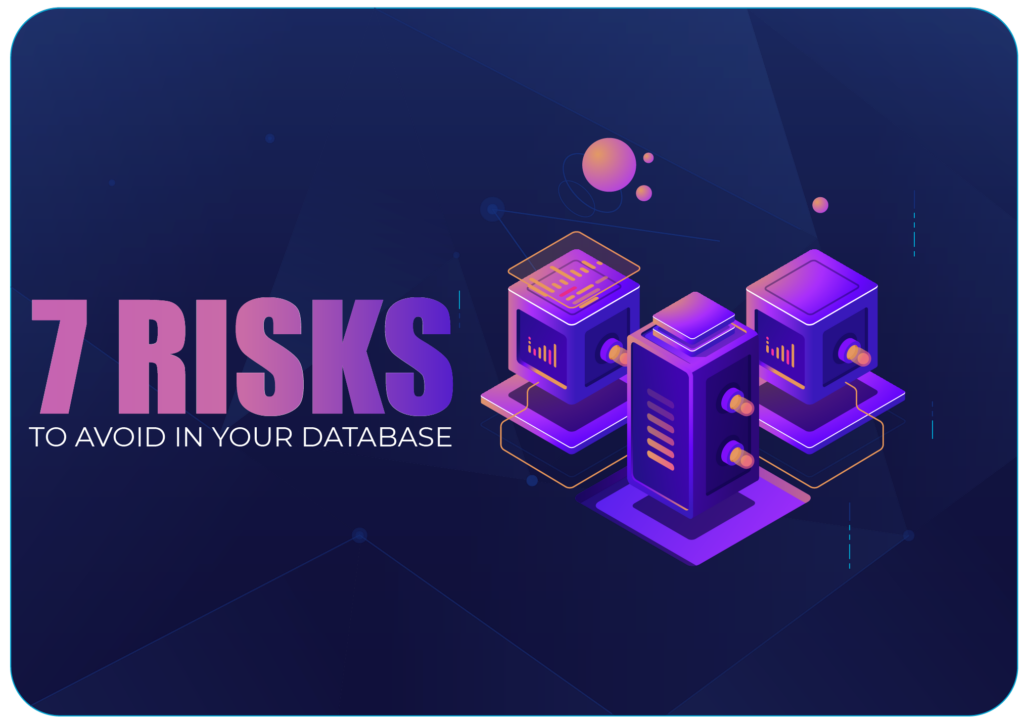

The stability of a production database is not a default state; it is the result of continuous vigilance against operational risks that accumulate silently. Critical incidents rarely arise from a single cause but from the intersection of process failures, technical debt, and unaddressed monitoring blind spots. The difference between a resilient environment and one prone to failure lies in the technical team’s ability to proactively identify and mitigate these risks before they compound into a service failure.
Below, we detail seven critical technical risks that, when ignored, lead to performance degradation, security vulnerabilities, and service outages. This is a pragmatic guide to assessing the operational health of your data environment and understanding how observability is the foundation for systematic mitigation.
1. Privilege Creep
The risk lies in granting database permissions that exceed the functional requirements of a user or application. In the name of agility, service accounts are given administrator privileges (sysadmin or db_owner), and developers gain write access to production tables. Each of these excessive permissions violates the principle of least privilege and expands the attack surface. a single compromised credential becomes a catastrophic point of failure, enabling data exfiltration, ransomware attacks, or the destruction of information. The consequence is a security risk that nullifies investments in perimeter defenses.
2. Normalization of Performance Degradation
This risk manifests as a slow, gradual erosion of performance. Queries that once executed in 100ms now take 150ms, then 200ms. The growth of data volume and the introduction of suboptimal code cause an incremental increase in latency, which is absorbed and normalized by the team until a tolerance threshold is breached, usually at peak demand. Without a historical performance baseline and deviation alerts, the team operates in a reactive mode, solving only visible crises while the user experience and the ability to scale continuously deteriorate.
3. Unvalidated Backup Strategies
The successful execution of a backup job does not guarantee the viability of a restoration. The risk is the false sense of security provided by logs that indicate “success.” Without periodic and automated restoration tests, the integrity of backup files remains unknown. Disk corruption, permission errors, or version incompatibilities can invalidate a backup—a failure that is only discovered during an actual disaster event. The consequence is the failure to meet Recovery Time Objectives (RTO) and Recovery Point Objectives (RPO), resulting in data loss and prolonged downtime.

4. Maintaining Default Database Configurations
Installing a database system and keeping it with factory settings is a significant risk. Parameters like maxdop (degree of parallelism), work_mem (working memory), or the Cost Threshold for Parallelism are designed for generic interoperability, not for the performance of your specific workload. A default configuration on production hardware leads to the inefficient use of expensive resources (CPU, RAM), resulting in thread contention, spills to disk, and unpredictable performance under load.
5. Reactive Storage Growth Management
The failure to proactively monitor the growth of data files, transaction logs, and temporary tablespaces (TempDB) poses a risk of a total outage. A single poorly designed query or a data loading process can consume all available disk space in minutes, causing the database to stop accepting new transactions. In cloud environments, this reactivity also has a direct financial impact, as the emergency provisioning of larger disks generates unplanned and often oversized costs.
6. Accumulation of Teure (The Operational Blind Spot)
This is the fundamental risk that exacerbates all others. The inability to answer basic operational questions in real time—”Which query is consuming the most CPU right now?”, “Who accessed this sensitive table in the last 10 minutes?”—creates a reactive management environment. Without granular and centralized visibility, troubleshooting becomes a time-consuming forensic analysis, threat detection is delayed, and performance optimization is based on assumptions, not data.
The Strategic Solution: From Reactive Management to Continuous Observability
The effective mitigation of these risks comes not from isolated tools, but from a unified observability platform. dbsnOOp is designed to provide this layer of continuous visibility into performance, security, and configuration. The platform establishes behavioral baselines to detect performance deviations, monitors access to identify privilege abuse, and provides the necessary insights to optimize configurations and plan for growth. By transforming the database “black box” into a transparent and analyzable system, dbsnOOp allows teams to transition from a constant state of incident reaction to proactive, data-driven management.
Do not let unmanaged risks dictate the stability of your environment. Build a foundation of resilience through visibility. Schedule a meeting with our specialist or watch a live demo.
Schedule a demo here.
Learn more about dbsnOOp!
Learn about database monitoring with advanced tools here.
Visit our YouTube channel to learn about the platform and watch tutorials.

Recommended Reading
- dbsnOOp: The Monitoring and Observability Platform with an Autonomous DBA: A fundamental read that directly addresses the “Risk of Observability Failure,” explaining how a unified platform is the foundation for mitigating the other risks.
- How to Configure SQL Server with AI: This article combats the “Risk of Default Configurations,” demonstrating how modern approaches can help optimize the environment proactively.
- AI Database Tuning: The antidote to the “Risk of Normalization of Performance Degradation.” Explore how AI can identify trends of slowness and optimize queries before they impact the business.

